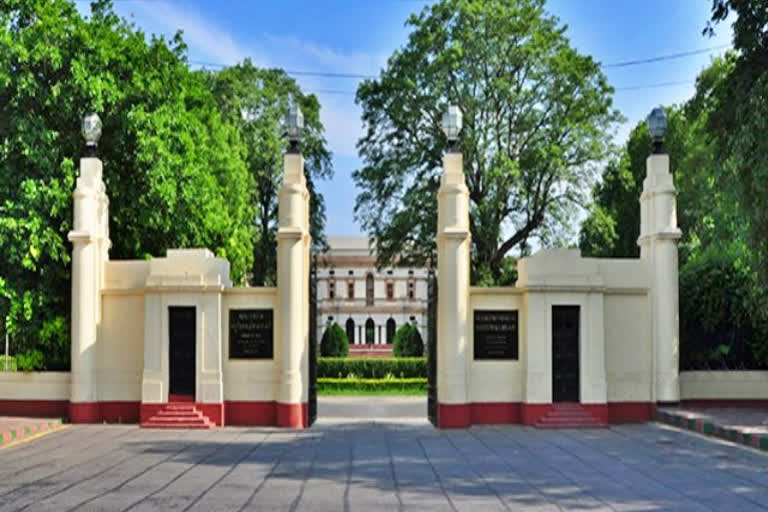New Delhi:Not known to many and not long ago, Delhi’s Teen Murthi Bhavan, named after the 1922 memorial of the statues of three soldiers erected just in front of the massive gates of the building, hid a culinary secret among its tree-lined foliage that provided much needed dark shade in the hot summers.
The complex housed a canteen that served succulent ‘puri-sabzi’ at unbelievably low prices. Not just that, there were ‘samosas’ and ‘gulab jamuns’ for those in a mood for snacks or even the ‘thali’, delectable south Indian dishes and ‘chowmein’ for the really hungry. Customers were the usual suspects - from the student-scholar academics coming to pour over the voluminous books and journals at the Nehru Memorial Library to government employees from nearby offices.
Like the food that borrowed from different regions, the complex has now become more representative of India’s syncretic culture than ever before as part of an ongoing effort at inclusiveness. With the inauguration of the massive Pradhanmantri Sangrahalaya within the sprawling complex at the heart of Edwin Lutyen’s Delhi on Thursday (April 14) - which also marked the birthday of BR Ambedkar - a prime upholder of civil rights in India, the government’s obvious effort to make a break with the colonial past that was followed by the Nehruvian era is all the more evident.
With the latest addition of a museum dedicated to the 14 Prime Ministers of India, the Teen Murthi complex has become more representative of India’s political leadership. In what used to be a name synonymous with India’s first PM Jawaharlal Nehru, Teen Murthi will be now a journey to appreciate the life and times of all Indian PMs - many of whom had struggled against adversity and immense odds to become what they did - with Lal Bahadur Shastri being the prime example.
The prominent logo of the ‘Pradhanmantri Sangrahalaya’ is that of a ‘dharmachakra’ of the ‘wheel of religion’- which is representative of India’s ‘sramanic’ past that lays emphasis on seeking and inquiry as against the Vedic ethos. It was the ascetic ‘sramanic’ ethos that gave birth to belief systems like Buddhism and Jainism. Beneath the ‘dharmachakra’ are outstretched hands representing the people of India in a statement of democratic intent.
Besides the ‘Pradhanmantri Sangrahalaya’, the complex houses ‘Shikargarh’- a 14th-century hunting lodge built for the use of Firoz Shah Tughlaq (1351–1388 AD), a Victorian style building that was built in 1930 by Robert Tor Russell as the official residence of the British India commander-in-chief, a planetarium that can that can show 2 million stars with a 360 degree view of the universe, and the Nehru Memorial Library.
In a governmental policy where cultural symbolism is considered important, the effort at the iconic Teen Murthi Bhavan can be considered to be part of the ‘Central Vista Redevelopment project’ located at a stone’s throw. ‘Central Vista Redevelopment project’ intends to revamp British colonial legacy architectural structures with ‘Indian’ structures that include a new Parliament building and a new common Central Secretariat building to house all the ministries.
